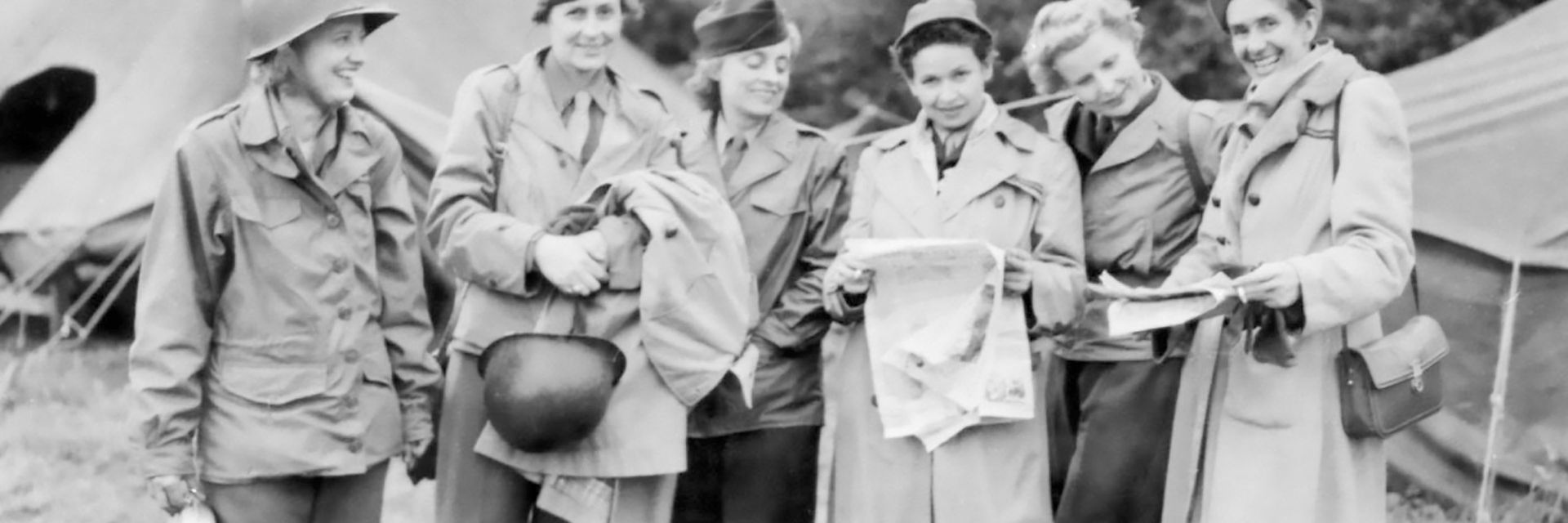The risks war correspondents face have evolved over the years. Across the world, they are subject to increasing threats, not only from warring forces but, in some cases, even from government-controlled military and police. Keeping journalists in conflict zones safe and on the job can be a treacherous job in itself.
◊
The night in 2011 that Egyptian president Hosni Mubarak stepped down from power, “it was like unleashing a champagne cork on Egypt,” in the words of CBS foreign correspondent Lara Logan, and all of Cairo erupted. She and her crew rushed from the Cairo airport to Tahrir Square, the site of many protests and encampment during Egypt’s “Arab Spring.”
What Logan could not have known was the fear, violence, and terror she would face, first-hand, later that evening at the hands of a Tahrir Square mob, which turned on her and started grabbing and pulling at her, even through the protective cordon of her crew.
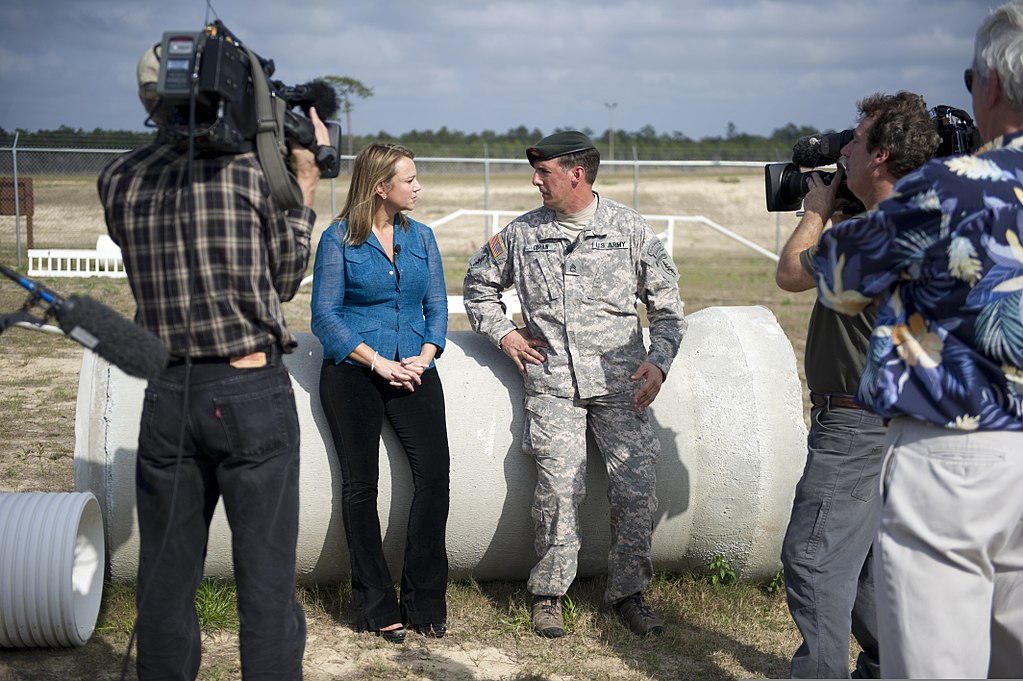
Lara Logan with CBS's "60 Minutes" interviews U.S. Army Sgt. 1st Class Chris Corbin.
(Image courtesy of Spc. Steven Young, via Wikimedia)
“The more I screamed, it turned them into a frenzy,” she reported in an interview on CBS’s 60 Minutes. “The savage assault turned into a murderous fury.” She was stripped, beaten with sticks and fists, had her hair viciously ripped, and her limbs twisted and stretched apart.
“When I thought, I am going to die here, my next thought was, I can’t believe I just let them kill me. . . . And that’s when I said, ‘Okay, it’s about staying alive now. . . . So the only thing to fight for, left to fight for, was my life.”
She was eventually rescued by a group of women, who shielded her against further assault until soldiers were able to bring her to safety. Such can’t be said of all violent encounters between the press and people engulfed in conflict. Many journalists around the world have faced serious injury and death from such unexpected sources as a restive crowd.
A total of 40 journalists have died in the line of duty to date this year (July 2018), and approximately 10 more citizen-journalists and media assistants have also been killed, according to Reporters Without Borders.
Romantic Images of War Reporting Give Way to a More Brutal Reality
When we think about journalists who cover wars and other armed conflicts, the first images that come to us are likely those of romantic, adventurous, devil-may-care women and men wagering their personal safety against the needs of the story, exhibiting grace under pressure. In fact, however, as you might imagine, the actual events through which war correspondents live might well be more unpredictable and risky than we realize.
While many among us remember dispatches from famous journalists covering wars from World War II forward – think of Edward R. Murrow’s radio broadcasts from London during the Blitz, Morley Safer and Dan Rather reporting on the Vietnam War, and Christiane Amanpour from war zones in multiple regions – there are numerous reporters and photojournalists all over the world today, covering dangerous situations, dealing with life during wartime, and taking potentially fatal risks in myriad violent conflicts.
During the invasion of Iraq, approximately 600 embedded journalists were permitted to join American forces.
.jpg)
Morley Safer (Image courtesy of The Peabody Awards, via Wikimedia)
In fact, war has changed since Vietnam dominated the news, as have the means and techniques of covering it. Today, American journalists are usually “embedded” with military units to which they’re assigned, and the units take some responsibility for the safety of the news crew. The advantages include a greater “shield of safety” for the journalists, and, of course, the military benefits from controlling the situations to which the reporters gain access. And, as you might surmise, the journalists may at least sometimes be influenced in their reporting by their dependence upon the soldiers who are protecting them.
Journalists Encounter Unknown Risks in New Environments
Independent journalists or those who decline “embedding” inherently accept greater risk, as the U.S. military doesn’t take responsibility for journalists who are not under their protection. In addition, in hot spots such as Myanmar, Somalia, Eritrea, Ethiopia, and many other countries, there is no official U.S. military presence, so international news crews in these areas must expect higher risk from militias, guerrillas, and other non-governmental forces.
Technology has changed as well, allowing for more timely – even “real time” – communication from virtually anywhere in the world. The new technologies have given unembedded journalists unprecedented mobility to get thrillingly, sometimes chillingly, close to the center of conflicts. This is especially true of photographic and video reporting, which often provide a more immediate experience of events than we could have known only a generation ago.
Dangers to War Correspondents Continue to Grow
While the many changes in elements of both warfighting and the technology used to cover it have resulted in a more powerful sense of “being there” than ever before, they’ve also produced conditions that are in many ways more treacherous, difficult, and unpredictable for the journalists in conflict zones. It’s not an overstatement to assert that the dangers they face rival the risks undertaken by combatants themselves.
The watchdog group Reporters Without Borders (RSF, for Reporters sans Frontières) tracks just how dangerous the situation has become. In RSF’s ongoing tally called the Violations of Press Freedom Barometer, the organization confirms that close to 70 journalists died in the line of duty in 2018, and approximately a dozen more “citizen journalists” and media assistants have also been killed.
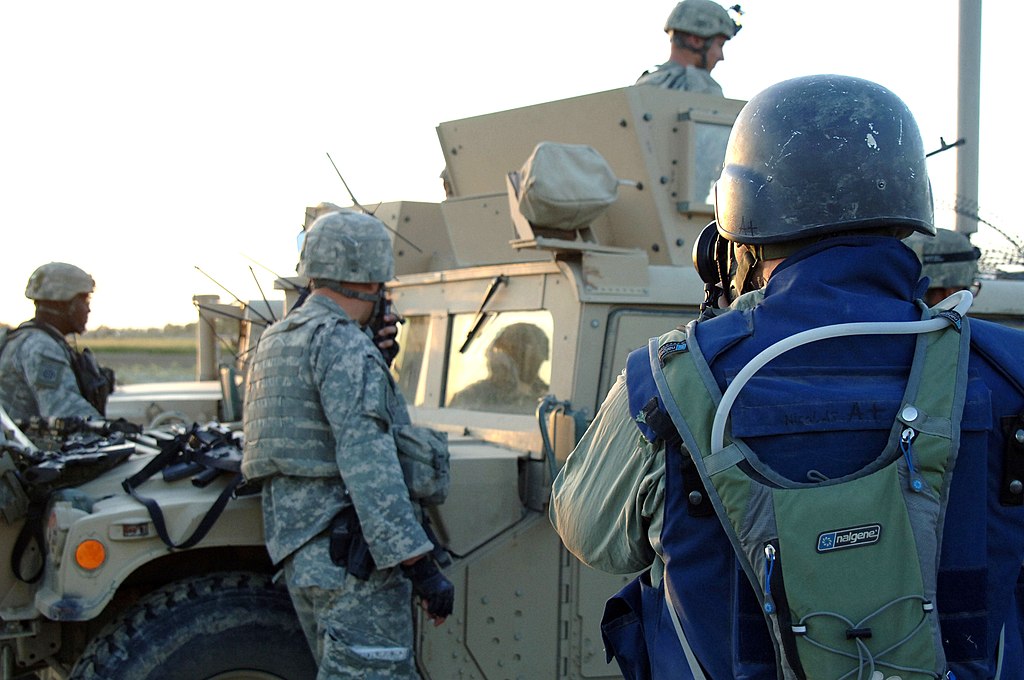
(Image courtesy of Staff Sgt. Michael L. Casteel, via Wikimedia)
In addition, the Barometer tallies journalists who have been imprisoned, and the numbers are simply shocking: As of May 2019, a total of more than 325 journalists and media assistants are in jails across the globe, from China to Turkey, and Syria to Vietnam.
The Most Dangerous Years for Journalists – And Threats Still Rise
According to the international nonprofit Committee to Protect Journalists (CPJ), the years 2009 to 2015 have been the most dangerous years for journalists’ safety since record-keeping began in the early 1990s. Coincidentally, those years contain the period that became known as the “Arab Spring,” during which there was brutal state reaction and repression in numerous countries, including epicenters of the uprisings such as Egypt and Syria.
In late 2010 the Arab Spring quickly spread throughout the Middle East, including Egypt, where journalist Lara Logan was attacked, and Syria, where anti-government protests gradually devolved into the horrific civil war that continues to this day.
Despite there being relatively fewer hot spots of armed conflict today than during the height of anti-Arab Spring government oppression, the threats to journalists just for doing their job has not abated. Numbers available on the CPJ website generally align with those posted by RSF: 5 journalists killed in 2019 as of May, 250 imprisoned in 2018, and 63 officially missing as of this writing.
State-Sanctioned Repression of the Press on the Rise
Correspondents are reporting ever-increasing threats in many countries and regions. With the worldwide rise in autocratic leaders and populist movements, reporters are frequently targeted for arrest in an effort to eliminate independent perspectives on events in countries as far apart in geography, culture, and ideology as Myanmar and Romania. And the BBC reported on the daunting obstacles faced by journalists and the free press in Pakistan, where reporters regularly face coercion, imprisonment, and beatings – and are sometimes even murdered – at the hands of military and government officials.

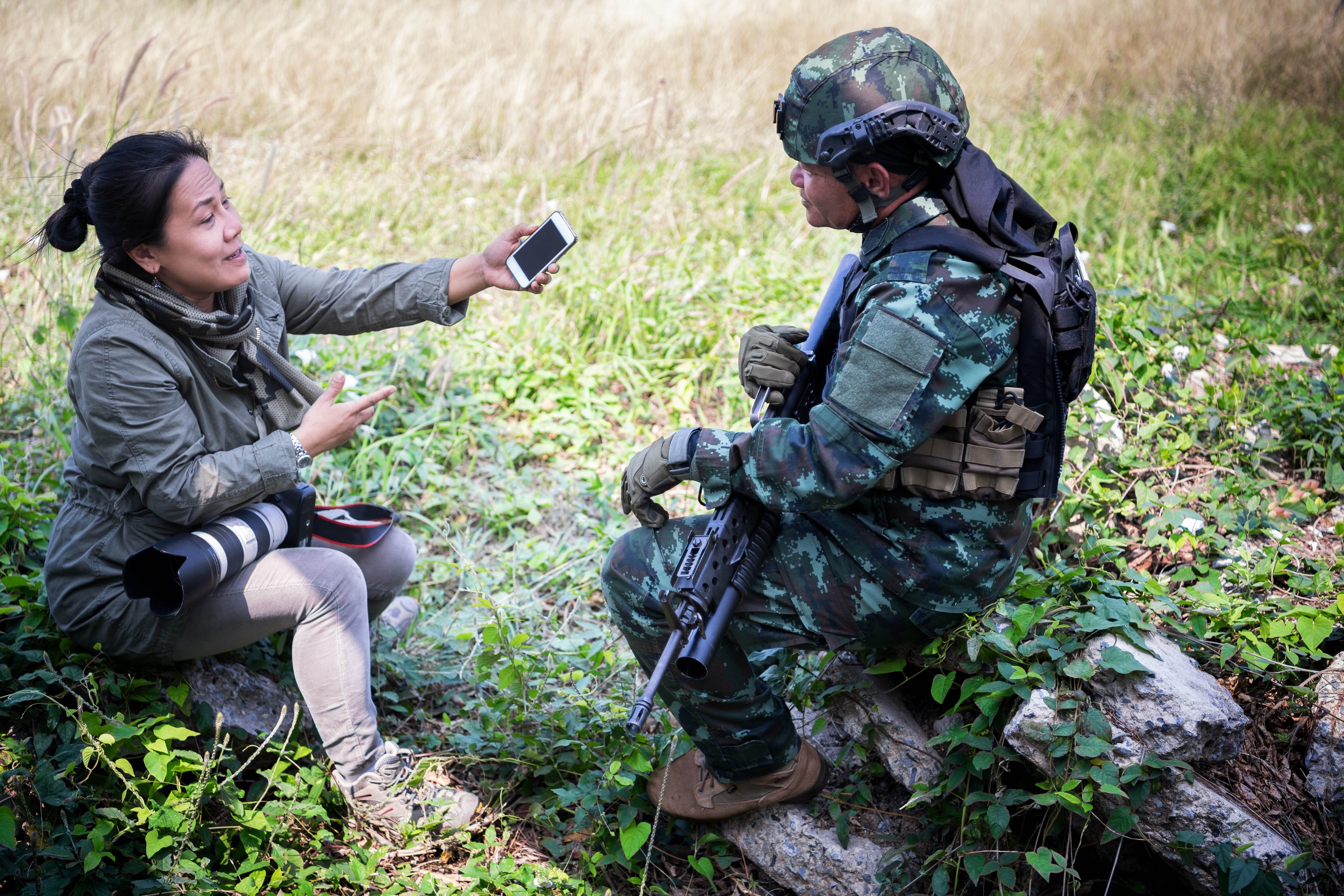
(Image courtesy of Adobe Stock)
The RSF has posted on its site a revealing, interactive map of the world titled the World Press Freedom Index that lists 180 nations and the relative ability of the press to operate in each of them without interference from governmental or nongovernmental entities. Unsurprisingly, North Korea holds the ignominious distinction of placing last among the 180 nations, with “usual suspects” such as Eritrea, Turkmenistan, Syria, China, and Vietnam also crowding the bottom rungs.
What Do Autocratic Countries Fear from a Free Press?
Even a cursory glance at the World Press Freedom Index will demonstrate that one huge factor distinguishing top-ranked countries – such as Norway, Sweden, the Netherlands, Finland, and Switzerland – from those toward the bottom is that the higher-listed nations tend to be well-established, long-standing democracies that are generally conflict-free and peaceful. You might be surprised to learn that the United States is ranked a disturbing number 48 on the index. Is this a sign of the times?
It seems fair to ask just why so many autocratic, war-torn states fear a free and inquisitive press to the extent that they censor news coverage and threaten, imprison, and sometimes kill the journalists who gather and disseminate the news. Maybe “they hate us for our freedom” really does apply in this situation.
Global media freedom is at its lowest level since the start of the century, according to an international study undertaken by British human rights organization Article 19 in conjunction with Sweden-based research organization V-Dem.
A recent study reported in the British press in late 2017 may offer some clues. The study states that press freedoms have been consistently eroding since about 2000 in the “vast majority” of countries across the full spectrum of authoritarian to free. Robert Mahoney, the deputy executive director of the CPJ, said:
“[T]here has ‘never been a more dangerous time to be a journalist’. . . . Donald Trump’s attacks on the ‘fake news’ media in the U.S. was sending a message to authoritarian leaders that it is acceptable to crack down on the press, pointing to recent criticism of CNN by the Egyptian government for its coverage of the terrorist attack on a mosque in Sinai.”
Capturing Hearts and Minds
There’s another reason governments, as well as armed anti-government groups in volatile regions, oppose, even despise, today’s news media. The often-shocking impact of the best visual media packs a visceral punch when it’s broadcast or streamed worldwide. Such imagery can mobilize viewers to oppose and potentially bring a quick end to warfare and atrocities, and all too often that opposition gets in the way of government priorities, as well as the propaganda needs of factions within a country or transnational region.
Some images are so riveting, so memorable, that they are seared into our minds, permanent reminders of the tragic effects of war on individuals, families, and communities.
One tragic example is a photo of Aylan, a three-year-old Syrian boy who attempted to flee his war-torn country several years ago, but drowned and washed ashore instead, still wearing his red T-shirt and short blue pants.
A year later, in 2016, a boy named Omran from the city of Aleppo, sat with shell-shocked expression, his face and hands coated with dirt and blood.
The sad truth is that such unforgettable, unforgivable images can be seriously inconvenient testimony against the regimes whose policies and violence impose atrocity and mass death on the innocent. The photos disturb us, touch us, urge us to take action, because of their power and the stories they tell.
In the documentary War Reporter: Cameras Don’t Stop Bullets, journalist Nassim Boumzan talks about the fear he feels when working on assignment: “In this job you are in crossfire [between police and demonstrators]. . . . You never know where the harm might come from.”
If you get killed doing what you love, then you’d leave with your soul in peace – War Reporter
Safety Often Takes a Backseat to Getting the Story
Crucially, war correspondents are reporting the story; they do not want to be the story. They get as close to their subjects as possible, sometimes too close, and occasionally that results in headlong rushes down rubble-strewn streets and into fields with precious little space to hide from shells and bullets.
The path they’ve chosen often prompts the journalists to face existential questions inherent in such highly volatile circumstances, questions that address the value of human life in extremis with both trepidation and compassion.
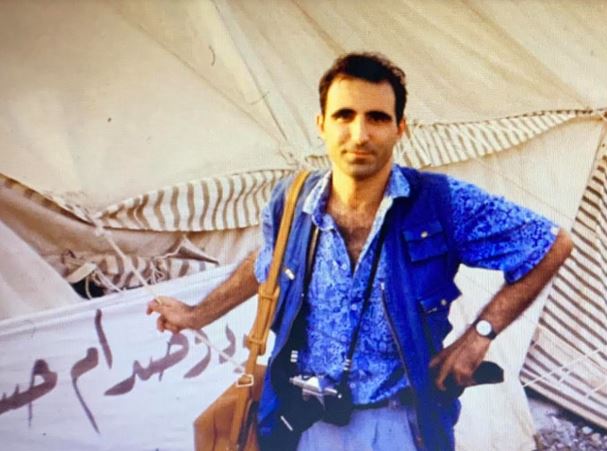
(Image courtesy of Wikimedia)
War journalists don’t want to die for their craft, and they are not cavalier about the potential for fatalities. But there are times when they become the targets of factions of the fighters, and casualties happen too often.
The International Community Takes a Stand
In 2015 the United Nations held an all-day meeting on the risks reporters encounter in active war zones. Presentations by nongovernmental organizations such as Reporters Without Borders and by individuals, including Marianne Pearl, widow of executed journalist Daniel Pearl, highlighted the inherent dangers war correspondents face. Speakers emphasized that violence against journalists was often a precursor to widespread human-rights violations.
As a result of these hearings, the U.N. Security Council passed Resolution 2222, which not only condemned attacks on journalists but also called on U.N. member nations to recognize journalists as civilians and, as such, to honor their status under international human rights law.
This is one step, but hardly enough to safeguard the lives of men and women covering conflict zones. International professional organizations that represent these journalists, such as RSF and the CPJ, work constantly to cast a bright light on the duty to protect journalists doing their job.
Over the 25-year period between 1990 and 2015, a total of 2,297 journalists and media staff have been killed in the line of duty.
Citizens Inspired by Images of War Can be Moved to Act
We all benefit from the vital information reported from war zones by professional journalists. It is through their daily commitment to deliver objective information about war, its causes, and its victims that we become informed citizens, perhaps even inspired citizens, moved to humanitarian action by the images we cannot un-see.
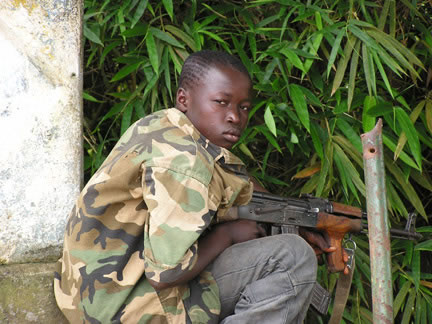
A child soldier of the Liberian rebel group LURD
(Image courtesy of SETAF in Liberia, via Wikimedia)
It follows that we can’t afford to ignore the increasing threats to journalists who cover countries and regions suffering violent conflict. It’s a fraught world with a lot of hot spots, not to mention mass dissension even in places that are not officially at war. Journalists are our lifeline to this essential news, news that’s crucial to a well-informed citizenry.
Journalists Risk Their Lives, and They’re Doing It for Us
War correspondents drop us right into scenes of repression, rebellion, and revolt. We witness the reality of both noncombatants and combatants living under severe pressure. We also see the courage of the photojournalists who document the pain and panic of these life-and-death struggles.
Covering extraordinarily dangerous situations all over the world, war correspondents place into high relief the risks to life in these areas and the commitment required to fight and not flee. Also vividly clear is the dedication of these journalists to tell the tales, and the passion required to cover violent conflicts at point-blank range.
The least we can do is to honor their efforts and support the safety of correspondents like Lara Logan who continue to risk it all so we may be better informed.
Ω
Kevin Martin is Senior Writer for MagellanTV. He writes on a wide variety of topics, including outer space, the fine arts, and modern history. He has had a long career as a journalist and communications specialist with both nonprofit and for-profit organizations. He resides in Glendale, California.
Title image: Female war correspondents during World War II. Left to right: Ruth Cowan, Associated Press; Sonia Tomara, New York Herald Tribune; Rosette Hargrove, Newspaper Enterprise Association; Betty Knox, London Evening Standard; Iris Carpenter, Boston Globe Erika Mann, Liberty magazine. (Source: US National Archives Public Domain, via Wikimedia Commons)
